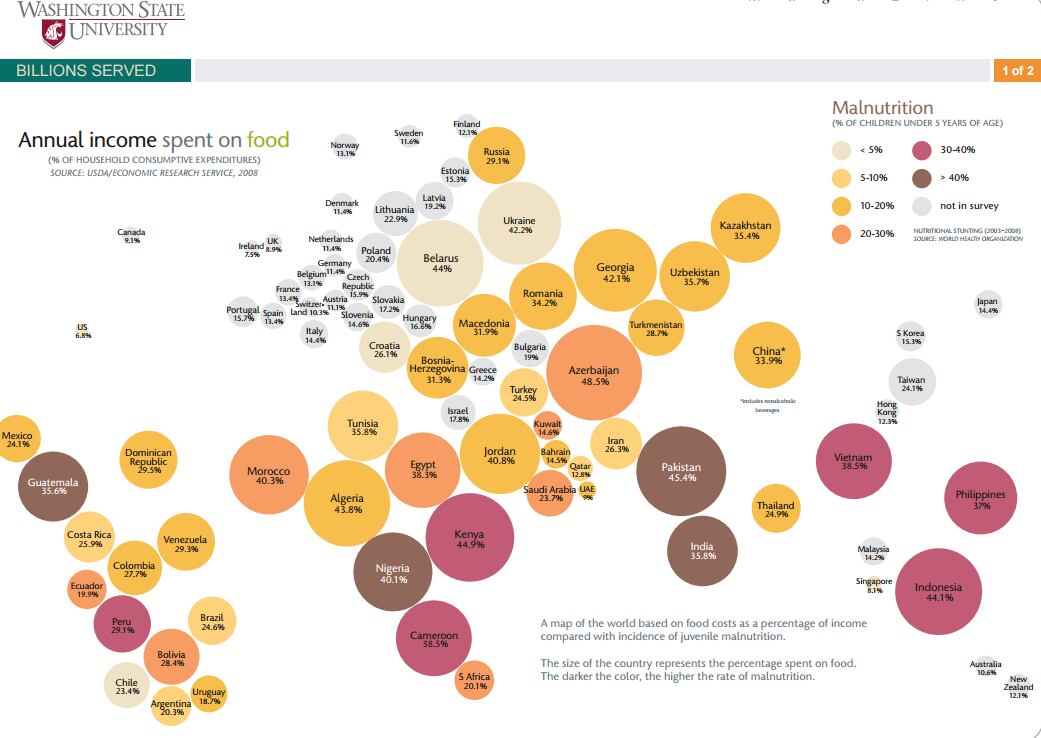The survey, jointly conducted by the Food Standards Agency (FSA-NI), Foodsafe and the Consumer Council in Northern Ireland, asked consumers to select a realistic, healthy food basket that met the family’s taste requirements and included some special food items for visitors and social occasions. University of Ulster nutritionists reviewed the baskets to ensure they met British nutritional guidelines.
They found that the cost of a healthy shopping basket was £59 (€80) for a pensioner living alone and £119 (€162) for a family of four. This equated to 36% of the pensioner's weekly salary if dependent on state benefits and 32% for a low-income family of four.
Sharon Gilmore, head of standards and dietary health at FSA-NI said: "For the first time, we have sound evidence on the real cost of an essential food basket and how food issues relate to poverty and economic hardship.”
Heat or eat?
A parallel FSA-NI report entitled Understanding food in the context of poverty, economic insecurity and social exclusion highlighted a number of factors that were trapping segments of society in a food poverty cycle.
The high cost of eating healthily, declining cooking skills and the fact that other expenses such as energy bills took precedence over food bills meant that people were buying cheaper and less nutritious food.
Government healthy eating campaigns were therefore not falling on deaf ears - rather empty pockets.
One report stakeholder said: “Public health messages about fresh fruit and vegetables and how essential they are for children’s wellbeing – they’re not lost on people. But it’s being able to afford them that’s the problem.”
More money, less food
In 2013 the lowest income households in the UK spent nearly one quarter (22%) more on food than in 2007 – but for this they were able to buy 6.7% less food.
Source: Department for Environment, Food and Rural Affairs, 2013
The large proportion of income spent on food meant that consumers closely tracked even the slightest price changes – but especially for the processed foods that they could afford to buy regularly.
One NGO worker interviewed for the report said: “I was meeting people that could tell you the price history on a packet of four blueberry muffins. They could tell you over the period of two or three months what the price fluctuations had been.
“People are [also] getting very savvy about knowing when a ‘special offer’ isn’t a special offer. They’re really watching these things.”
A worldwide trend
The Northern Ireland research confirms findings from a 2015 Lancet Global Health study which showed that an increasing dependency on cheap, nutrient-poor processed food can be seen throughout Western nations and, increasingly, middle-income countries such as China and India where obesity problems could begin to eclipse undernutrition.

But the study, which evaluated diet quality in 187 countries for over 4.5 billion adults, found there were still some differences on a smaller regional scale.
“In southern Europe, lower socioeconomic status is associated with higher consumption of fruits and vegetables, possibly reflecting greater domestic production in rural areas,” the authors wrote.
Meanwhile, the proportion of annual income spent on food varies worldwide but is typically much smaller in Western countries. US households spend as little as 6.8% of their annual income on food compared with 20% in Poland, according to USDA data from 2008. This rose to between 30 and 50% for African, Asian and ex-USSR countries.
